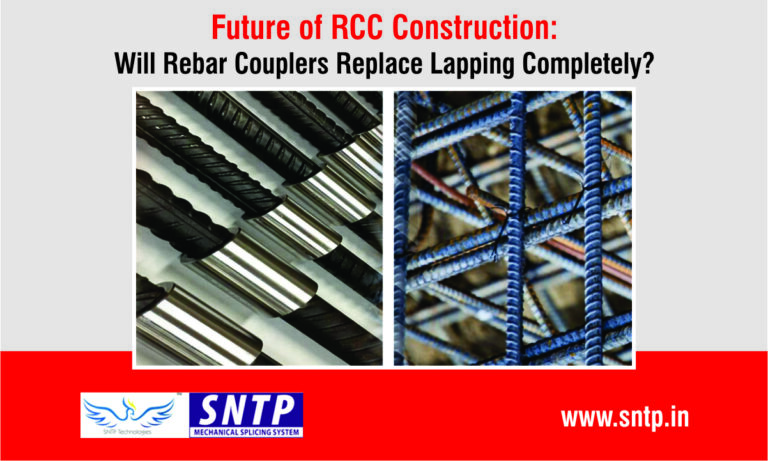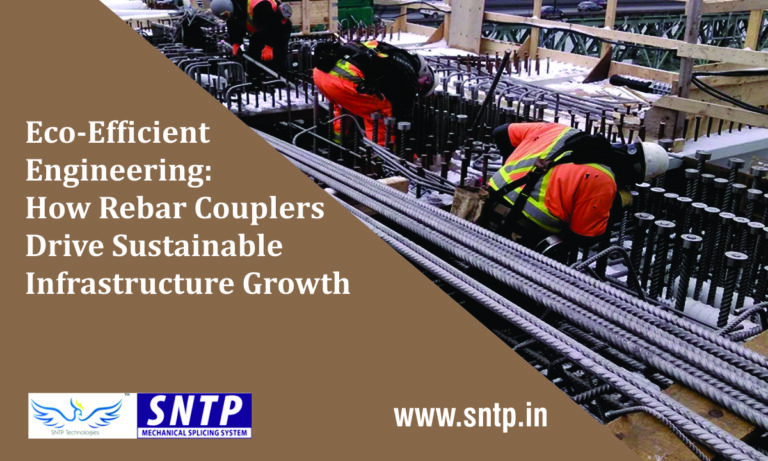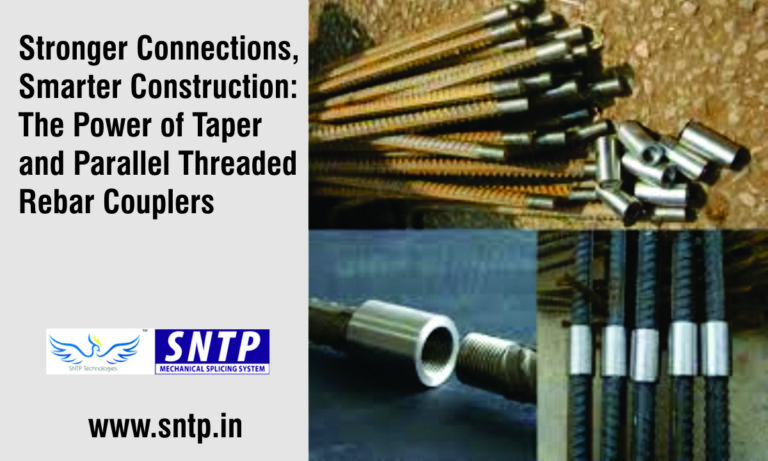+91 9953 65 9594

Top Challenges in Indian Construction Solved by Rebar Couplers
India’s construction sector is one of the fastest-growing in the world, contributing significantly to the nation’s GDP. From metro networks and highways to high-rise buildings and affordable housing projects, the industry is under constant pressure to deliver faster, safer, and more cost-efficient structures.
However, Indian construction faces unique challenges—steel wastage, project delays, seismic safety, and rising costs. Traditional methods like lap splicing often fall short in addressing these issues.
This is where Rebar couplers are changing the game. By offering stronger, more efficient connections between reinforcement bars, they solve several key problems faced by builders and developers across India.
Challenge 1: Excessive Steel Wastage
One of the biggest cost concerns in Indian construction is steel wastage. Lap splicing requires extra bar length (up to 40 times the diameter of the bar) just for overlaps. On large projects, this can translate into tons of wasted steel—increasing both costs and carbon footprint.
✅ How Rebar Couplers Help
Rebar couplers eliminate the need for overlaps by directly connecting bars end-to-end. This saves 15–30% of steel in major projects, reducing costs significantly while also supporting sustainable construction practices.
Challenge 2: Reinforcement Congestion
In heavily reinforced zones like columns, beams, and junctions, overlapping bars create congestion. This makes concrete placement difficult, leading to honeycombing, weak bonding, and reduced durability.
✅ How Rebar Couplers Help
By replacing bulky overlaps with compact couplers, reinforcement becomes streamlined and less congested. This allows better flow and compaction of concrete, improving the quality and strength of the final structure.
Challenge 3: Project Delays
Indian construction projects often struggle with tight deadlines. Lap splicing requires manual tying and aligning, which takes considerable time, especially on high-rise or infrastructure projects. Delays directly increase labor costs, equipment rentals, and overheads.
✅ How Rebar Couplers Help
Rebar couplers speed up the process by allowing quick and precise connections. With fewer steps and less manual labor, reinforcement work progresses faster. For metro projects, bridges, and residential towers, this means quicker completion and earlier handovers.
Challenge 4: Weak Joints in Seismic Zones
India is prone to earthquakes, especially in zones like Delhi NCR, the Himalayas, and the Northeast. Lap splicing does not always guarantee full load transfer, creating weak spots that may fail during seismic activity.
✅ How Rebar Couplers Help
Couplers are engineered to provide 100% strength of the parent bar. Seismic-grade couplers offer additional ductility and fatigue resistance, making structures more resilient in earthquake-prone regions.
Challenge 5: Quality Compliance and Approvals
Government projects and private contracts now demand materials that meet BIS and ISI standards. Using non-certified products can cause delays in approvals, safety concerns, and even legal disputes.
✅ How Rebar Couplers Help
ISI-certified rebar couplers, like those from SNTP, comply with IS 16172:2014 standards. This makes it easier for contractors to pass third-party inspections, ensuring smoother progress without compliance issues.
Challenge 6: Rising Construction Costs
With increasing prices of raw materials, labor, and logistics, profit margins in construction are shrinking. Contractors must find ways to control costs without compromising safety.
✅ How Rebar Couplers Help
Rebar couplers cut down on:
- Steel wastage
- Labor costs (less time and fewer workers)
- Equipment rental (faster project completion)
All of this leads to higher profit margins for builders.
Challenge 7: Precast and Modular Construction Needs
India is moving toward precast and modular construction for faster delivery. But joining precast elements securely is a challenge when relying on lap splicing.
✅ How Rebar Couplers Help
Couplers allow easy and strong connections between precast modules. From metro segments to modular housing blocks, couplers enable seamless assembly and structural continuity, making them indispensable in modern construction.
SNTP – Providing Solutions That Matter
At SNTP, we understand the unique challenges of Indian construction. That’s why our rebar couplers are:
- ✅ ISI-certified (IS 16172:2014) for guaranteed safety and compliance
- ✅ Engineered for zero slippage and full strength
- ✅ Available in standard, position, transition, and seismic variants
- ✅ Manufactured with high precision for faster, easier installation
By choosing SNTP, builders and contractors can not only solve key construction challenges but also deliver projects that are stronger, faster, and more profitable.
Conclusion
The Indian construction industry faces constant pressure from tight timelines, cost escalation, and safety regulations. Traditional methods like lap splicing are no longer enough to meet modern demands.
Rebar couplers offer a smarter alternative—solving problems like steel wastage, reinforcement congestion, project delays, and weak joints in seismic zones. For builders aiming to deliver world-class projects on time and within budget, couplers are not just an option—they are a necessity.
With SNTP’s ISI-certified couplers, the future of Indian construction looks faster, safer, and more profitable.
© Copyright 2017.SNTP All Rights Reserved.
Design & Developed By Star Web Maker







